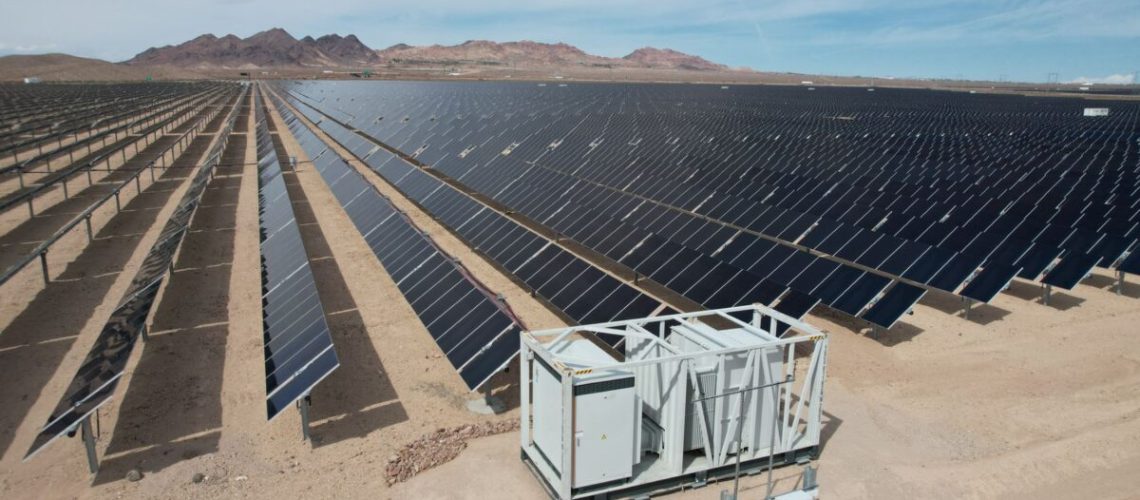A new report by Dartmouth and Princeton University found that solar and wind project developers stand to reap significant cost savings by using U.S.-manufactured components and paying workers fair wages, thanks to investments tied to the Inflation Reduction Act.
For the first time in U.S. history, using American-made solar and wind power components will be cheaper than importing equipment from Asia, while the Inflation Reduction Act is forecast to generate $200 billion in total wages for the U.S. solar market in 2035.
A new report penned by Dartmouth University and Princeton University researchers found that solar and wind project developers stand to reap significant cost savings by using U.S.-manufactured components and paying workers fair wages, thanks to investments tied to the Inflation Reduction Act of 2022.
“Using U.S.-manufactured parts and materials for clean energy development and paying workers a fair wage has always been the right thing to do. Now it’s also the most economical thing to do,” said Jason Walsh, executive director of the BlueGreen Alliance, publisher of the academic report. “This report shows that the IRA successfully creates an air-tight business case for supporting U.S. workers and manufacturers.”
The Ivy League renewable energy report a developer meets prevailing wage and apprenticeship standards, the cost of producing solar or onshore wind power drops more than 60%, relative to deciding not to offer workers fair pay and career pathways. Any additional project costs associated with meeting these labor standards are more than offset by the full credit. Costs will likewise be roughly 20% cheaper for offshore wind projects that meet these labor standards than projects that do not.
Together, the clean energy tax credits and Section 45X manufacturing tax credit will induce demand for more than 4 million additional clean energy jobs across both industry verticals. The report attributes 3.7 million additional jobs to the utility-scale solar market and about 350,000 new wind market jobs in 2035, compared to projected employment levels without the IRA.
This includes domestic demand for 2.5 million jobs in solar manufacturing tied to the onshoring efforts provided by the IRA’s domestic content and advanced manufacturing tax credit. In project development and construction, the IRA is expected to stimulate 1.9 million jobs by 2035 for the utility solar development market.
The $200 billion in total solar market wages assumes the workforce earns the median real wages and does not account for wage increased in compensation to satisfy high demand for labor in the expanding market. Prior research found that a 20% increase in installation and construction labor costs would increase the installed cost of utility solar by only 3%.
The induced demand for renewable energy employment under the IRA is the result of both accelerated power capacity additions associated with production tax credit (PTC) and investment tax credit (ITC) incentives as well as increases in domestic manufacturing associated with the 45X manufacturing credit and the PTC/ITC domestic content adder.
By spurring growth in the U.S. solar and wind markets the IRA will help to:
- Link climate action with the creation of high-paying manufacturing jobs;
- Reverse the economic and racial inequality fed by manufacturing job losses;
- Counter the labor and human rights violations that plague overseas solar and wind supply chains;
- Support cleaner domestic manufacturing of the aluminum and steel that go into solar panels and wind turbines rather than relying on more emissions-intensive imports;
- Build reliable supply chains for solar and wind power rather than exposing our climate goals to shipping bottlenecks and geopolitical conflict; and
- Foster global competition in solar and wind manufacturing to drive down costs, rather than trusting the world’s monopoly producers to maintain low prices indefinitely.
The report is titled, “Effects of Renewable Energy Provisions of the Inflation Reduction Act on Technology Costs, Materials Demand, and Labor,” and is authored by Yohan Min, Erin Mayfield and Maarten Brinkerink of Dartmouth’s Thayer School of Engineering, and Jesse Jenkins of Princeton’s Department of Mechanical and Aerospace Engineering.




